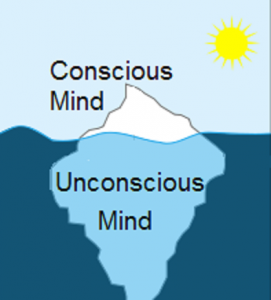
To start with, what is an algorithm, then? Well, its a fancy word for a series of steps which are enshrined in a computer programme. At the basic level, an analogy could be a recipe for cooking where the individual steps are set out in order; first, step 1, peel an onion, then, step 2, chop up the onion, then, step 3, put a knob of butter in the pan .you get the picture. The purpose of the algorithm is that it eliminates the reliance on human judgement, it is the computer programme which decides.

When a human carries out an interview they have inherent biases, some are deliberate or conscious, some are unconscious. In recruitment conscious and unconscious bias is major issue for companies which are trying to achieve diversity and match their skills gap. Unfortunately, however hard you might try, humans tend to like and select people they identify with, people like themselves (we all tend like people like ourselves) and that creates a bias and, potentially, results in a lack of diversity. These unconscious biases are difficult to eradicate because this is where human beings make quick assessments of other people based on their personal experiences, cultural environment and background, all of which may be very different from the applicant. You can actually take a test, one example being the Implicit Associations Test (IAT) designed at Harvard,

to assess the unconscious roots of your feelings and thoughts. It is part of human nature to have preferences and categorise others in a particular way, however, from the firms perspective, this might result in diverse talent being rejected.
As a result, for many years, large companies have been exploring the use of algorithms in recruitment. The programme acts as a filter, the classic being minimum qualifications. Over the last few decades many firms upped the bar to consider only graduates from specified universities to apply for roles, they might have only looked at those graduates with a 2:1 and umpteen A*s. Then when they met them, they might have often been underwhelmed. Its not surprising though is it that this person who has spent many hours in the library toiling away is good at passing exams but not necessarily as good a communicator or team player as someone who didnt pass as many exams but spent most of their youth arranging and attending social events. More recently firms have been steering away from the qualifications bar as they recognise that a wider search and diversity bring positive benefits and have looked to other measures, such as their own online assessments or psychometric testing, to support their selections.
The computer can only search for information that is there. As the old adage goes rubbish in, rubbish out. It is a perfect medium to sift through hundreds of applications early in the screening process and perhaps filter out what you dont want. Therefore, the danger of relying solely on an algorithm is that computer sez no and you might

reject talent which could be a perfect fit for your organisation. This is why interviews have to form an essential part of the process as you can assess the way candidates communicate, how they deal with verbal challenges and their abilities to solve problems or influence. However, to ensure biases are minimised a panel of selectors from a range of backgrounds should be employed or selection outsourced.

At Kloodle we have been working with a number of firms to help them in their talent selection process. When students complete their Kloodle profile they tag in the skills they have evidenced. On top of this they can write blogs and provide videos of their experiences. We have developed a programme which searches the database for requisite skills and ranks the aspirants based on those skills. So, for example, if you want to recruit someone who needs to be a strong team player, through our algorithm we can search our extensive database of students at colleges all around the country and rank the candidates who can evidence strong team characteristics; not just talk about it, but can prove that they can do it. The programme then provides a list of potential candidates. This can act as a method of providing a long or short list for interview. As the profile has dynamic content, which is regularly supplemented the student profiles and skills evolve. It works in a similar way to Google; when a

user enters a query, Google crawls through the internet searching for the most relevant information for the user, ranking it based on the interest from other users and the quality of

content. Contrast this with most online recruitment firms who use systems to match CVs to employers but as the information is a snapshot, the datapoints are limited and so is the match.
Overall, we believe that algorithms can be actively involved in the recruitment process and there are merits of using computer programmes to achieve diversity, but the process must be handled with care and involve human input at the critical stages. Computers can only search and filter, they cannot identify the talent best-suited to your organisation.
